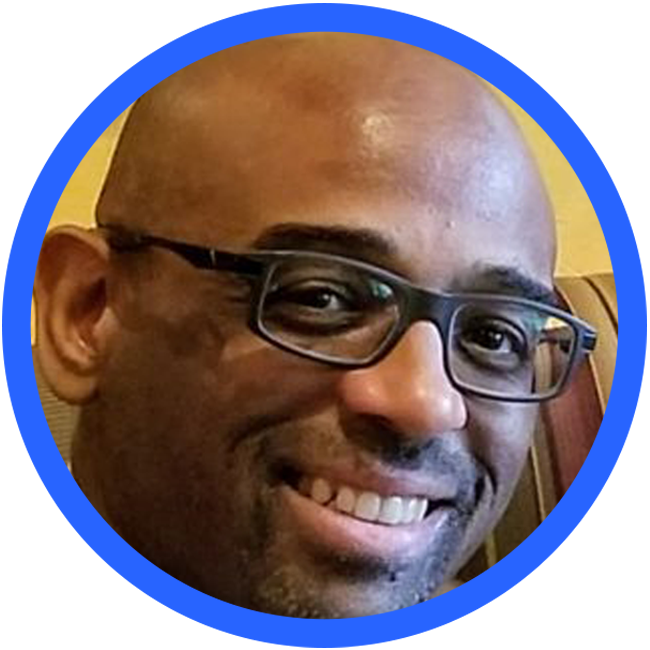Observing Human Behavior To Create Value


Tyrome “Ty” Smith, has spent over 25 years consulting and leading executives and their teams by helping them understand human and organizational dynamics. Currently, he is a senior consultant to the Department of Defense (DoD), where he has developed an innovation education program including coaching and mentoring product development teams engaged in an internal incubator. Ty is a much sought-after workshop presenter for topics ranging from unconscious bias to business model innovation. Much of his insight into human systems dynamics comes from serving as a police officer early in his career as well as working with adolescents in therapeutic settings.
Can you walk me through the trajectory of your work at DoD?
This is my 15th year being a part of the DoD. I started off doing a lot of facilitation helping people get clear on the goals and objectives. I went from there to doing strategy work and helping people get clear on what’s important: like, what business are we in and to what end? In the last five years, I’ve been focusing mostly on innovation work helping small teams design products, helping organizations think about how to change their policy, and developing curriculum to teach Lean Startup branded as something called Fast Forward.
Can you tell me more about your work with human dynamics and relationships?
In graduate school, my main focus was organizational communication and psychology. This is where I started my journey learning about how people interact and how groups behave, especially when you consider that the whole of the group behavior is greater than the sum. For me, there was a corollary to innovation, if I help people understand how they get along and how they cooperate, maybe I can help them think about creating value. Because whether it is working in family systems, working in organizational systems, working in business systems, it’s all about creating value for the people who are part of it. I spent a lot of time, very early in graduate school, as a psychiatric technician, working with kids who are very emotionally disturbed and had placement in psychiatric facilities. It was in that environment that I learned about of what happens when one part of a family system, in this case the child, is seen as the bad part, meaning that they are depreciating the value of the system. But you take that same kid out of the system and all of a sudden they can get healthy. They become responsible for their actions. They’re focused and quite clear about their lives. But when you put them back in that same family system, they go crazy. For instance, when they would return from a short four hour home visit, it would take us two weeks to peel them off the ceiling and get them focused.
The same thing that happens in an organization: we have all heard the following: “If only those guys would do this, then the whole system would work, i.e., if only IT would get itself together, then we would be better. Or, if only the marketing people would really market our product, we would only be better.” It’s the same process if they’re human beings getting in the way of doing good work. The dynamics that I learned have and continue to inform how I work with people.
And how does Lean Startup tie into that?
One of the things that I learned in graduate school was that when trying to understand how humans work it was sometimes necessary to create a hypothesis around my observations and what they might mean. So you watch behavior, you create a hypothesis, you do some testing. Observe what the system tells you and then you can make the appropriate adjustment, which is basically Lean Startup. When I train people I say, “You learned everything you need to learn about Lean Startup in third grade science, because that’s basically what it is. The tests are a little more sophisticated, but the process is the same.” I used to work at Home Box Office in the mid-two thousands. When I got there people wanted to know what it’s like to work in a government agency. And my response was, it’s the same thing as working here–a bunch of people doing a bunch of stuff, getting in their own way of being successful. It’s a human dynamic. The unit of measure is a little different, but the way that you go about understanding whether or not you’re being successful is very similar.
For me, there was a corollary to innovation, if I help people understand how they get along and how they cooperate, maybe I can help them think about creating value.
Has the culture of DoD changed in the time you’ve been doing this? We tend to think of government agencies as very staid institutions.
The short answer? Nope. The more nuanced answer is yes, I have seen a change, but it happens very locally. A bureaucracy is a bureaucracy for a reason. It is there to maintain itself and the systems and the value that it has created for the long haul. What you end up having to do as a consultant is say, “Where can I push this thing so it keeps moving in a direction that’s creating value?” The building that I work in is the third largest building in the Washington DC area. It’s as big as two battleships sitting side by side. You’re not going to push this over by doing anything dramatically, but you will change it incrementally. Clay Christensen would talk about incremental versus disruptive innovation. Depending on where you are in the system, and depending on the level in which you work, you can probably get a little change in culture, but overall it is a staid and solid institution. The DoD is a bulwark in America. It ain’t going anywhere, so to speak.
Is there a principle or value that you live by?
Stay curious. One of the things that I’m really good at is knowing what I know, and then being honest about what I don’t know. Because now I’m old enough to have an AARP card, I play the old man card. When I don’t know or understand something, I raise my hand and say “I have no idea what you’re saying, could you help me.” By asking that question, I’m providing that space for myself to be honest with what I’m experiencing. What it allows me is to join with others to get clarity to unpack ideas.
What’s something you do to help keep balance in your life?
Mow the lawn. Because the only thing that matters is that the line stays straight. That’s it. It’s a very zen moment because you have to stay present. If your intention is to make straight lines, you have to stay present to the intention of making straight lines. If you aren’t attentive and don’t pay attention your grass will look “jacked up”!
What do you see in the world that you think is in need of innovation?
It’s big and it’s hairy and it’s difficult, but the notion of race and what does it mean. As a black man standing up in America, how am I seen? How am I taken in? What does it mean for my sons? I have an 18 and a 16 year old. How do they find their own space and live in that space and in a way that they feel authorized and competent? When things kicked off with George Floyd in Minneapolis, one of our Lean Startup colleagues wrote on Twitter, “I don’t know what to do except curse and clean my kitchen”. And I said to him, “I think you can do more than that. You help billion-dollar companies solve really, really hard problems. I think you can use some of that way of understanding and I’m challenging you to join me.” Out of that came a months-long conversation with a group of Lean Startup colleagues thinking about what they could do differently. Our group was called “In the Storm”
It wasn’t big stuff. The principles of Lean Startup suggest that to make a change you have to just do something. You can’t say, “Oh my God, I don’t know what to do about race.” It starts with a conversation. It ain’t got to be big, because Lord knows, it’s a long road ahead. It took us a long time to get here. It ain’t going to happen overnight. Just try something.
